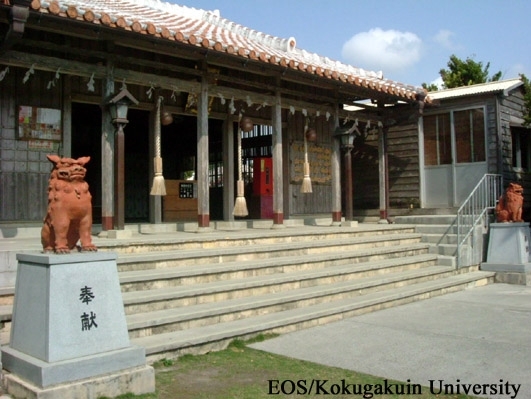- トップ
- Encyclopedia of Shinto
- Ryūkyū Shintō
Encyclopedia of Shinto
| Main Menu: | |
| Links: |
詳細表示 (Complete Article)
| カテゴリー1: | 5. Rites and Festivals |
|---|---|
| カテゴリー2: | Rituals in Okinawa and Amami |
| Title | Ryūkyū Shintō |
| Text | The term Ryūkyū Shintō is an all-embracing term frequently used to refer not only to the Shrine Shintō (see The History of Shrines and Shintō) transferred (kanjō) from the mainland since the medieval period, but also to traditional Ryūkyū beliefs that are regarded as primitive forms of Shintō. The oldest work that discusses Ryūkyū Shintō is the Ryūkyū Shintōki (1608; "A record of Ryūkyū Shintō"). Its author, the Buddhist priest Taichū (1552-1639), went to the Ryūkyū archipelago in 1603 and produced the book after a three-year stay. The fifth volume deals with Ryūkyū Shintō in the broadest sense, giving founding legends of the kingdom's shrines, details of mythology and traditional beliefs native to the Ryūkyūs, and information about Kinmamon, a serpent deity who protects humans. Ryōbu Shintō exerted a major influence on Shrine Shintō in the Ryūkyūs; the main shrines and their associated temples—commonly referred to as the Eight Shrines—of the Ryūkyūs were all established around the same time. The eight shrines and their associated temples were Naminouegū and Gokoku-ji, Okigū and Rinkai-ji, Shikinagū and Jin'ō-ji, Futenmagū and Jingū-ji, Sueyoshigū and Henshō-ji, Asato Hachimangū and Jintoku-ji, Amekugū and Seigen-ji, and Kingū and Kin-Kannon-ji. The royal court provided support for stipends and appointed priests (shinshoku) at seven of these shrines, Kingū being the exception. There were also other shrine-temple complexes outside this grouping, such as Chōjugū (now Ukishima Jinja), that possessed more ancient histories. Judging from the fact that the eight shrines belonged to the Shingon sect of Buddhism and the other shrines had different sectarian affiliations, it is likely that the sectarian discord lies behind the status of the Eight Shrines. Of the Eight Shrines, Hachimangū enshrined Emperor Ōjin, Tamayorihime, and the Empress Jingū, through a transferrence (kanjō) of Hachiman Daibosatsu. All of the other shrines received the transfer of Kumano Gongen in its specific manifestations as Izanami, Hayatama-no-o, and Kotosaka-no-o as their objects of worship (saijin). Some believe these transferrences came about through contact between the Japanese mainland and the Ryūkyūs via the Kuroshio (i.e., the Japan Current). In any event, Ryūkyū Shintō, which sought to position itself as the protector of the court and lacked parishioner (ujiko) networks due to its disregard for the common people, lost its patrons with the collapse of the Ryūkyū Kingdom. Naminouegū was accorded the rank of kanpei shōsha (see Modern shrine ranking system) in 1890 and thus received economic support from the Meiji government; the other shrines, however, fell into ruin and remain so to this day. New shrines established after the Meiji period in keeping with the trends of the times include Okinawa Shrine, a prefectural-level entity built in 1916 within the old royal palace, and Yomochi Shrine, a district-level entity built in 1937. Minamoto no Yoritomo, Shuntennō, and Shōtai—the royal ancestor and last of the Ryūkyū kings—are enshrined at the former, while the latter enshrines the 16th century figure Gima Shinjō, who introduced sugar cane to Okinawa and began the production of unrefined sugar there, as well as the 18th century politician Saion, who devoted himself to administering Okinawan agriculture. See alsoRyūkyū Shintōki — Saitō Michiko |




